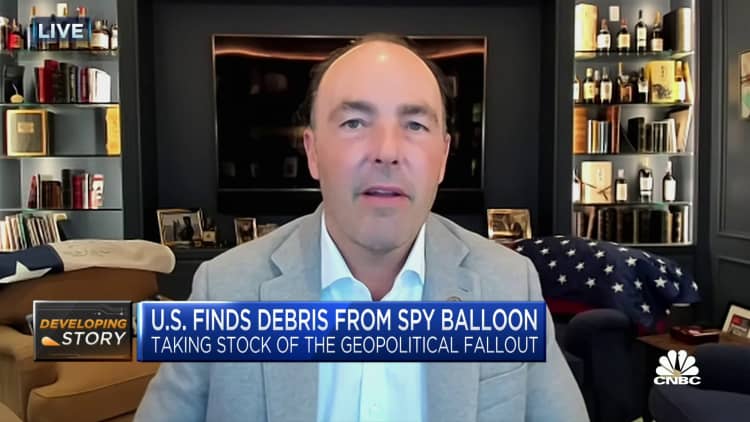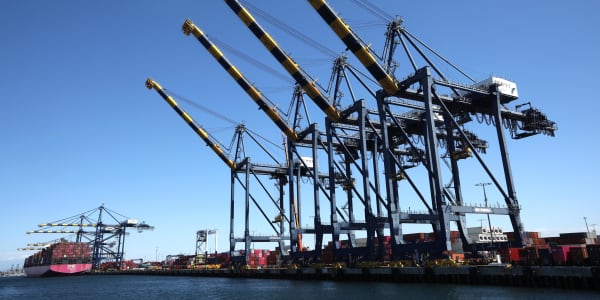The tensions between the U.S. and China over alleged spy balloons shot down over North America have some of the top trade associations representing companies reliant on Chinese manufacturing to urge their members to diversify their supply chains.
The National Retail Federation, the American Footwear and Apparel Association, and the Council of Supply Chain Management Professionals tell CNBC that the rising tensions with China due to the spy balloons have resulted in new concerns from their member companies, already dealing in recent years with tariffs imposed by President Donald Trump and President Joe Biden, and Covid shutdowns under the "Zero Covid" policy.
"The ongoing tensions with the U.S.-China trade relationship continue to highlight the need for supply chain diversification," said Jon Gold, vice president of supply chain and customs policy of the National Retail Federation. "From the tariffs to Covid-19 to additional challenges, retailers are looking for opportunities to diversify their sourcing to ensure they have resilient supply chains to meet consumer needs."
Mark Baxa, president and CEO of the Council of Supply Chain Management Professionals, told CNBC that the trade group's members have been pursuing redundancies in their supply chain since the start of tariffs as a way to offset the risk of ongoing trade policy tensions.
The latest data shows a significant move of manufacturing to countries including Vietnam and the Philippines. Many companies are also leaning into the revised NAFTA agreement, UMSCA, as a way to bring more manufacturting back to North America.
"We’ve seen an accelerated pace where members are seeking capacity within the context of the benefits the USMCA agreement offers," Baxa said. "Supply chain leaders are seeking lower risk and a better means to serve the U.S. by looking and moving to Canada and Mexico. Other reshoring actions we are seeing others taking are alternative countries like the EU, Vietnam, South Korea, and India. Some are bringing the work right here to the U.S."
These moves are not made lightly, Baxa said, with a number of key criteria on the list of what supply chain managers review when evaluating a manufacturing geography change. The availability of technology and a capable workforce, infrastructure, reliability, and quality are the top "must-haves," he said.

Steve Lamar, CEO of the American Apparel and Footwear Association, said the bar to leave China is high because the country remains an important trade partner for a variety of reasons, ranging from access to materials and products to skill sets. While the new tensions reinforce the reasons to consider diversifying the supply chain, he doesn't think they will make the migration occur any more rapidly.
"I don’t think the events over the last week accelerate trends, which have been underway for some time and are only moving as fast as policies, skill sets, capabilities, materials, etc., will allow them," Lamar said. "Rather, they perhaps put an exclamation point on them, reminding folks of the geopolitical tensions that are already self-evident."
The biggest example of all when it comes to China manufacturing risk is the market's largest company, Apple, which in recent years has begun to move some manufacturing, including to India. But the "stumbling blocks" that can result from these efforts has become evident in quality problems with Apple's initial India-based manufacturing, according to a new report from the FT.
Another reason for the reluctance to move out of China is direct consumer access.
"Selling into the Chinese market requires a certain amount of local presence," Lamar said.
The ongoing challenge amid multiple crises, Gold said, is time.
"It takes time to diversify your supply chain," he said. "You need to make sure the new vendors can meet all the retailer's requirements and any testing required by law, as well as ensure that the right workforce and logistics exist to meet those needs."





